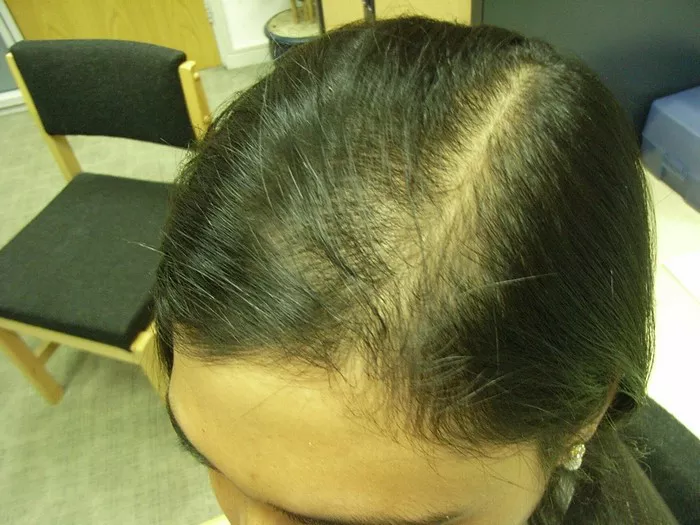Hair loss, medically known as alopecia, is a prevalent condition affecting millions worldwide. It’s a concern that transcends age, gender, and ethnicity, impacting individuals physically and emotionally. Despite its prevalence, the root causes of hair loss remain elusive to many. In this comprehensive article, we delve deep into the various factors contributing to hair loss, separating fact from fiction and shedding light on the science behind this common yet complex issue.
Understanding the Hair Growth Cycle
Before exploring the causes of hair loss, it’s essential to grasp the fundamentals of the hair growth cycle. Hair growth is a dynamic process characterized by three distinct phases:
1. Anagen Phase: This is the active growth phase where hair follicles produce new hair. It typically lasts between two to seven years, with hair growing at a rate of approximately half an inch per month.
2. Catagen Phase: In this transitional phase, hair growth ceases, and the hair follicle begins to shrink. This phase lasts for about two weeks.
3. Telogen Phase: Also known as the resting phase, hair remains in the follicle but is no longer actively growing. After a few months, the old hair is shed, and the cycle begins anew.
Understanding this cycle is crucial as disruptions at any stage can lead to hair loss. Now, let’s delve into the various factors that can interfere with this intricate process.
Genetics: The Primary Culprit
One of the most significant determinants of hair loss is genetics. Androgenetic alopecia, commonly referred to as male or female pattern baldness, is the leading cause of hair loss in both men and women. This hereditary condition is characterized by a gradual thinning of the hair, typically starting at the temples or crown in men and resulting in a receding hairline or bald spot. In women, it often manifests as diffuse thinning across the scalp.
Androgenetic alopecia is primarily influenced by genetic factors and hormonal changes. In individuals predisposed to this condition, hair follicles become sensitive to dihydrotestosterone (DHT), a potent androgen derived from testosterone. This sensitivity leads to miniaturization of the hair follicles, resulting in thinner, weaker hair that eventually ceases to grow altogether.
Hormonal Imbalance: A Contributing Factor
Hormonal fluctuations can also play a significant role in hair loss. Imbalances in hormones such as testosterone, estrogen, thyroid hormones, and cortisol can disrupt the hair growth cycle and contribute to shedding. Conditions such as polycystic ovary syndrome (PCOS) and thyroid disorders are known to cause hormonal imbalances that may result in hair loss, particularly in women.
Additionally, hormonal changes during pregnancy and menopause can trigger temporary hair shedding known as telogen effluvium. While this type of hair loss is usually temporary and resolves on its own, it can be distressing for those experiencing it.
Stress and Lifestyle Factors
The connection between stress and hair loss has long been recognized, albeit not fully understood. Psychological stress, whether acute or chronic, can disrupt the normal functioning of the hair growth cycle, leading to increased shedding. This type of hair loss, known as telogen effluvium, occurs when a significant number of hair follicles prematurely enter the telogen (resting) phase due to stress.
Furthermore, lifestyle factors such as poor nutrition, inadequate sleep, and smoking can also contribute to hair loss. A diet lacking in essential nutrients, particularly vitamins and minerals crucial for hair health, can deprive the hair follicles of the necessary building blocks for growth. Similarly, chronic sleep deprivation and smoking have been linked to decreased blood flow to the scalp, compromising the delivery of nutrients to the hair follicles.
Medical Conditions and Treatments
Certain medical conditions and their treatments can have a profound impact on hair health. Autoimmune diseases such as alopecia areata can cause sudden, patchy hair loss due to the immune system mistakenly attacking the hair follicles. Scalp infections, such as ringworm, can also lead to hair loss if left untreated.
Furthermore, the side effects of certain medications can result in hair loss as a collateral effect. Chemotherapy, for instance, is notorious for causing widespread hair loss due to its cytotoxic effects on rapidly dividing cells, including hair follicles. Similarly, medications used to treat conditions like acne, high blood pressure, and depression can also contribute to hair thinning in some individuals.
Environmental Factors and Hair Care Practices
Exposure to environmental pollutants and toxins can take a toll on hair health, contributing to hair loss over time. Pollutants such as cigarette smoke, heavy metals, and airborne chemicals can accumulate on the scalp, causing inflammation and oxidative stress that interfere with the hair growth cycle.
Moreover, certain hair care practices, such as excessive heat styling, tight hairstyles (like braids or ponytails), and aggressive brushing or combing, can damage the hair shaft and weaken the follicles, leading to breakage and hair loss.
Conclusion
In conclusion, hair loss is a multifactorial issue influenced by a combination of genetic, hormonal, environmental, and lifestyle factors. While the underlying mechanisms of hair loss are complex and varied, understanding these contributing factors is crucial for effective management and treatment.
If you’re experiencing significant or persistent hair loss, it’s essential to consult with a healthcare professional or dermatologist to determine the underlying cause and develop a personalized treatment plan. By addressing the root cause of hair loss and adopting healthy lifestyle habits, you can take proactive steps towards maintaining optimal hair health and regaining confidence in your appearance.


